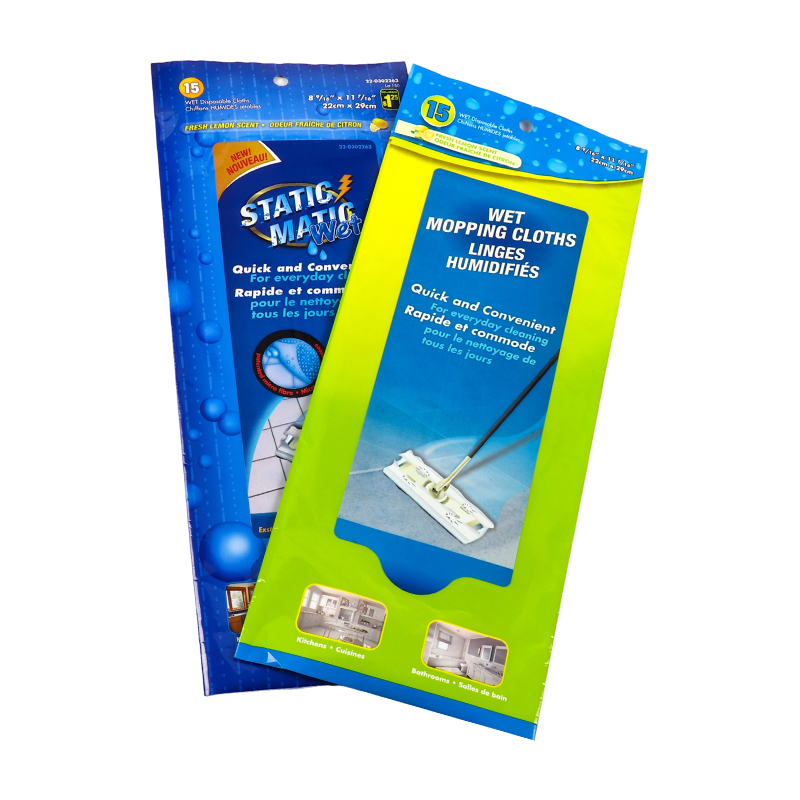2025-07-24
The wet wipes industry has seen rapid growth fueled by increasing consumer focus on hygiene, convenience, and multi-purpose cleaning solutions. Central to this expansion is the evolution of packaging technologies that not only preserve product integrity but also enhance user experience and align with environmental priorities. Among these innovations, wet wipes composite packaging bags have become an industry favorite, combining advanced materials engineering with practical design to meet the diverse needs of manufacturers and consumers alike.
What Are Wet Wipes Composite Packaging Bags?
Wet wipes composite packaging bags are specialized pouches made from multiple layers of different film materials laminated together. This composite structure integrates the strengths of each component, such as moisture barrier properties, mechanical toughness, printability, and sealability, resulting in packaging that is robust, flexible, and capable of maintaining the condition of wet wipes over time.
Typically, these bags incorporate layers of polyethylene (PE), polypropylene (PP), polyester (PET), and sometimes aluminum foil or metallized films. The composite layering ensures the packaging effectively protects against moisture loss, contamination, and physical damage, while providing an surface for high-quality printing.
Advantages Driving Industry Adoption
Moisture Barrier: Composite films significantly reduce water vapor transmission, which is critical for maintaining wet wipes’ moisture levels, thereby extending shelf life and ensuring a consistently pleasant user experience.
Enhanced Durability: The multi-layer construction provides resistance against punctures, tears, and abrasions during handling, shipping, and everyday consumer use.
Customizable Design: The exterior film layer supports detailed, full-color printing and finishing techniques, allowing brands to communicate product benefits, ingredients, and certifications vividly and effectively.
Versatile Sealing Options: Wet wipes composite packaging bags often feature resealable adhesive flaps, zippers, or easy-tear openings that improve user convenience and product hygiene.
Lightweight and Space-Efficient: Flexible composite bags reduce packaging weight and volume compared to rigid containers, lowering transportation costs and storage footprint.
Application Spectrum and Market Demand
Wet wipes composite packaging bags serve a wide range of markets:
Personal Care: Baby wipes, facial cleansing wipes, and intimate hygiene products rely on composite packaging for gentle moisture preservation and attractive branding.
Healthcare: Medical and disinfectant wipes require secure, tamper-evident packaging to maintain sterility and consumer confidence.

Household Cleaning: Multipurpose cleaning wipes benefit from durable composite bags that keep wipes fresh and accessible for repeated use.
Industrial: Heavy-duty wipes used in automotive, manufacturing, and food service industries demand robust packaging resistant to harsh environments.
Trends and Innovations in Composite Packaging
Recent developments have propelled wet wipes composite packaging bags forward in terms of functionality and sustainability:
Sustainable Film Compositions: Efforts to reduce environmental impact include the use of recyclable mono-material composites, incorporation of recycled content, and development of biodegradable laminates.
Advanced Printing Technologies: Digital and hybrid printing enable customization with variable data, security features, and vibrant graphics that help brands stand out.
Smart Packaging: Integration of QR codes and NFC tags on packaging enhances consumer interaction, providing product usage instructions, authenticity verification, and marketing engagement.
Improved Resealability: Innovations in adhesive technology and zipper designs have increased the reliability of resealable closures, preserving wipe moisture and prolonging product usability.
Barrier Enhancements: New composite formulations integrate materials like EVOH or metallized films for protection against oxygen and moisture ingress.
Sustainability Challenges and Industry Responses
The multi-layer structure that makes composite packaging effective also complicates recycling due to difficulties in separating materials. Addressing this challenge, the industry is focused on:
Design for Recycling: Creating mono-material composite films that maintain barrier performance while enabling easier recycling.
Material Reduction: Using thinner films without compromising durability to reduce plastic use.
Take-Back Programs and Consumer Education: Encouraging responsible disposal and recycling of wet wipe packaging.
These initiatives align with growing regulatory pressures and consumer demand for sustainable packaging solutions.